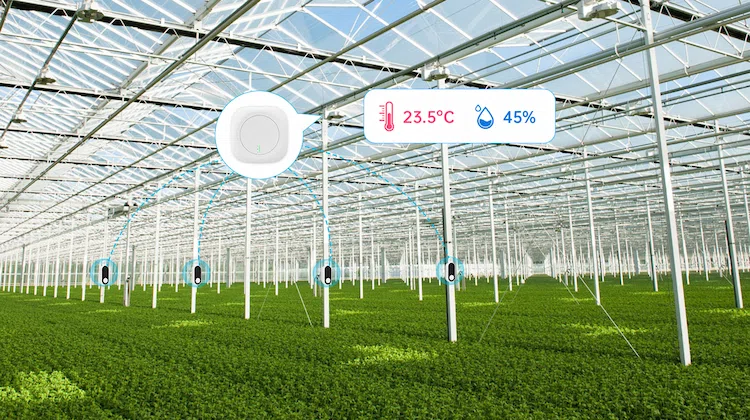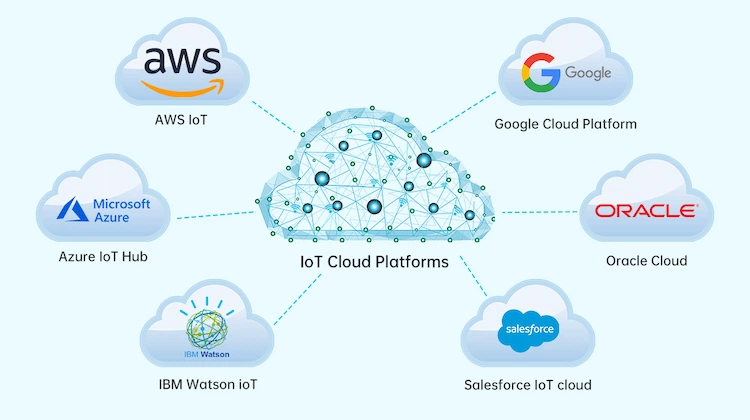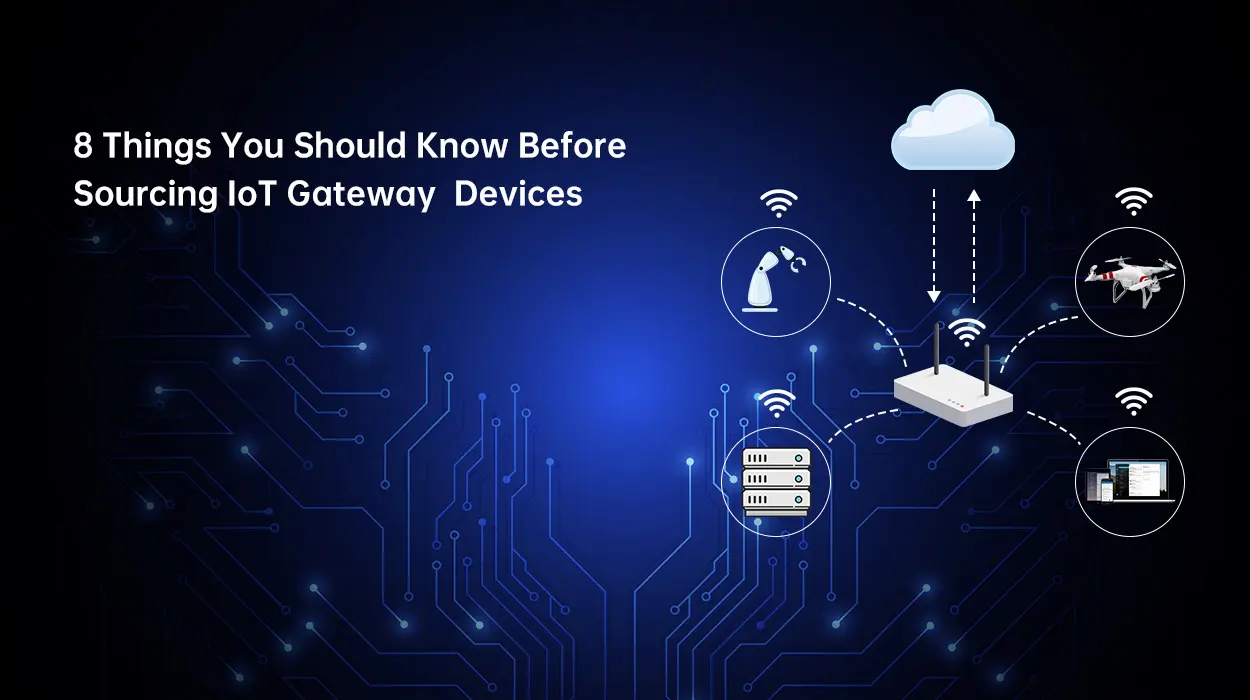Unless you have been living on a desert island somewhere, like Robinson Crusoe, you would have heard the term ‘Internet of Things’ or IoT more or less. Nowadays, IoT devices and adoption have quietly made their way to medical, education, industry, and pretty much sectors. As the IoT expands, integrating a variety of new and traditional IoT devices into the complex IoT environment becomes a top challenge, thus increasing the demand for IoT gateway devices that play an essential role in maintaining IoT device connectivity.
IoT Gateway Devices: What is it all about
What is an IoT Gateway?
An IoT gateway, serving as a mediator or bridge, is a physical device or virtual platform that connects IoT devices, sensors, actuators, and the cloud. The term “gateway” is pretty self-explanatory, and it functions as a security checkpoint to handle the inbound and outbound traffic, thereby ensuring reliable and efficient communication between IoT devices and the outside world.
All data and information streaming between the IoT devices and the cloud passes through the IoT gateway devices, with data flowing primarily towards the cloud but can also be back and forth in cases where actuation is required. That is, all data from IoT devices is aggregated, processed, and filtered through gateways before being sent to the cloud. Similarly, when the IoT gateway receives information or instructions from the external cloud, they are then transferred to the device.
Overview of the IoT gateway market
The IoT gateway is one of the most promising industries these years as IoT technology marches forward. With a CAGR of 13.5%, the global IoT gateway market is estimated to witness tremendous growth from a value of USD 1163.2 million in 2020 to USD 2478.6 million by 2026. An interesting phenomenon is that edge deployment will become a new competitive feature for IoT gateway vendors as it plays an important role in integrating the IoT devices and cloud platforms, as well as overcoming the challenges of internet connectivity between these devices.

How does an IoT gateway device work
IoT gateways are intended to simplify the communications and management of IoT devices. While traditional IoT gateways perform several critical functions including device connectivity, data filtering, protocol translation, data management, security, and updates. Advanced IoT gateways are capable of performing complex edge computing, which can have a big impact on reducing response time and network transmission costs.
If you imagine an IoT ecosystem, a gateway sits right between different types of IoT devices, facilitating their communication with the central data system or even the cloud.

IoT gateways translate protocols to establish communications
Communication bridges are established between distributed IoT devices, IoT gateway, and the cloud. For the first two, media of communication includes short-range wireless technology like Bluetooth LE, Zigbee, and Z-wave, as well as long-range like LoRa, LTE, LTE-M, and WiFi. The IoT gateway then transmits the data and information to the cloud using WiFi, 4G, 5G, or Fiber Optics WAN.
IoT gateway devices may pre-process the raw data from numerous touchpoints
An IoT gateway receives a large amount of data from different types of connected devices and sensors per second. As massive amounts of IoT data may cause overload to the cloud, the IoT gateway processes and filters the collected raw data to reduce data volume before passing it along to the cloud platforms. The processed data can be translated into single standard protocols such as AMQP, DDS, CoAP, MQTT, and WebSocket for more efficient computing.
What are the advantages of using IoT Gateway devices
As more and more vendors flood the market, IoT gateways are configured with higher specifications to achieve better performance, and so do the benefits they create. Following are some of the major advantages.
Inter-device and device-to-device communication. As a centralized hub, an IoT gateway not only provides access for multiple IoT devices to communicate with one another but also enables data flow between devices and cloud platforms. Without your IoT gateways, it’s more of a hassle that these smart devices and sensors work individually and cannot communicate with each other.
Edge computing. This could be a significant benefit of the IoT gateway. By pre-processing the collected raw data before sending them to the cloud, advanced IoT gateways are enabled to perform complex computing, thus reducing the network response time.
High energy and cost efficiency. IoT gateways are enabled to manage data transfers, reduce bandwidth consumption, and reduce latency for IoT devices, making them ideal for deployment in any IoT ecosystem. In addition, the cost savings from one IoT gateway are negligible, but you’ll notice a considerable reduction when deploying a large number of gateways.
Security risk mitigation. With the explosion of IoT devices, the security risks against them crop up here and there, making the communication bridge – IoT gateways attach more importance than ever. As expected, IoT gateways are equipped with multiple security options to ensure an extra security layer between the Internet and the devices.
Durable and Reliable. While a commercial IoT gateway has all the advantages above, it is not exactly the same as an Industrial IoT gateway. They differ in that IIoT gateways can withstand extremely hostile industrial conditions. IIoT gateways are usually built with robust industrial materials that are more durable and reliable, allowing them to endure wide-ranging temperatures, humidity, radiation, dust, vibration, and even explosions.
Real-world examples of IoT Gateway devices applications
IoT gateways can be as varied as the condition they are deployed, with each gateway requiring different protocols, connection methods, and energy requirements to bring myriad distributed IoT devices and sensors together. Over the past few years, IoT gateways have provided substantial support for a wide range of industries, achieving a variety of business purposes. Following are some real-life examples of how IoT gateway devices could be used.
Smart agriculture via sensors and gateway to boost crop yield and reduce wastage.
There are many variables that require to be monitored or controlling in smart farming, including soil quality, humidity, UV radiation, crop growth, and more. To observe the crops and their environment in real-time and make alternations in time, farms mounted lots of sensors, gateway, and actuators within the farming site to collect precious data and information.

In-vehicle IoT gateway devices to serve Vehicle Area Networks.
In-vehicle IoT gateway applications could be seen everywhere. Some emergency response vehicles such as police, fire, or EMS could benefit a lot from the vehicle area networks. IoT devices such as cameras, radars, mapping systems or sensors can aggregate information including vehicle GPS location, road information, mission destination, and more, and then the gateway will receive these data and transmit them to the cloud for analysis. In this way, those emergency response vehicles could accomplish their tasks more easily.

Telehealth to monitor patients in real-time.
IoT gateway devices could also find their role in the healthcare sector. Bluetooth gateways can be used for monitoring the location and treatment status of patients that are obtained from sensors. It not only helps in patient management but it can also be utilized to manage attendance.

What’s the difference between a router and a gateway
The term router often gets mixed up with IoT gateway. There are many similarities between the functionality of IoT gateways and Routers, but IoT gateways do much more. Both of them work autonomously as a bridge that enables communication between different types of devices and communication technologies. However, the major differences are that IoT gateways can integrate data from different devices and process the data before sending it to the external cloud. Simply put, an IoT gateway can perform complex tasks during offline and online situations whereas a router can only work when it’s online to bridge devices to the internet.
Best cloud services for IoT gateway connection
IoT cloud platforms bring together the capabilities of IoT devices and cloud computing, delivered as an end-to-end service. At present, there are several IoT Cloud Platforms on the market provided by different service providers, which carry a wide range of applications. Here, we have selected some of the best cloud services for your reference.

-
- Amazon Web Services IoT Platform
- Microsoft Azure IoT Hub
- IBM Watson IoT Cloud Platform
- Google IoT Cloud Platform
- Oracle Integrated Cloud for IoT
- Salesforce IoT
As for which cloud service is best for you to go with, it ultimately depends on your specific needs. When choosing the right platform, you are supposed to take these factors into consideration, including real-time data capture capability, data analytics performance, device configuration, API protocols, cloud model type, etc. Of course, usage cost is another significant factor that cannot be ignored.
How secure are the IoT Gateway devices
In terms of security, IoT devices are highly vulnerable to cyber-attacks. In particular, as the number of IoT devices and sensors grows, so do the communications between the devices and cloud platforms, thus increasing the vulnerabilities of the IoT ecosystem. To some extent, IoT gateways can be regarded as the first line of defense against hackers, so they are supposed to be designed with solid cybersecurity to prevent any data tampering or unrestricted access.
Sitting between the IoT-connected devices and the cloud, IoT gateways actually provide an additional protection layer within the IoT system. To reduce the overall risk of hacking, IoT device reduces the number of total internet connections. In addition to data protection, IoT gateways also provide physical resistance to devices to deny external unauthorized access and harsh environmental conditions. All of these ensure the security of entire data-to-cloud encryption from online and offline threats.
Where to choose suitable IoT Gateways
The more IoT devices you want to apply to your business condition, the more complicated the IoT ecosystem you will have to build. It is a daunting task to connect your devices securely to the cloud and gather IoT-generated data, but MOKOSmart will make it easy. Our deep hardware experience will help connect your IoT solutions to the cloud platforms intelligently and securely.
Offering a wide range of IoT sensors, Bluetooth gateways, LoRaWAN gateways from smart home devices to industrial machinery, MOKOSmart will deliver you secure wired and wireless connectivity for pretty much devices. If you are looking for a suitable IoT gateway solution for your applications, just contact us immediately. Meanwhile, our engineering experts are always here to support your IoT projects.






























